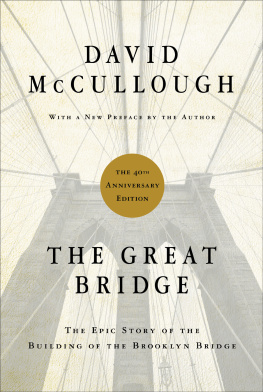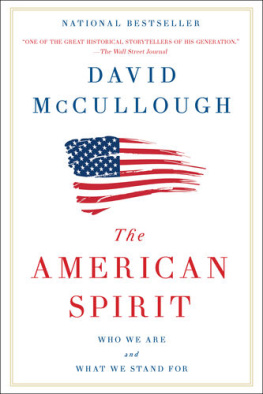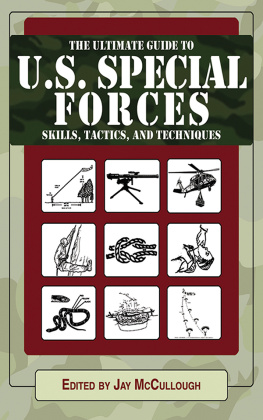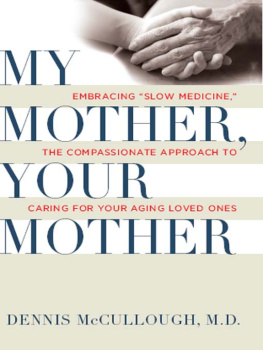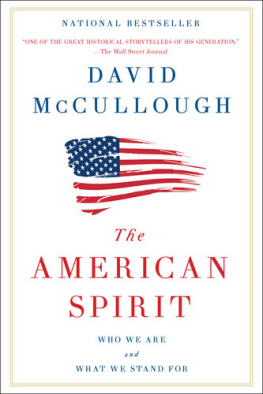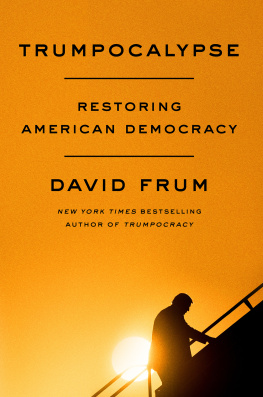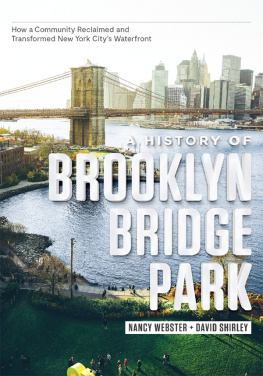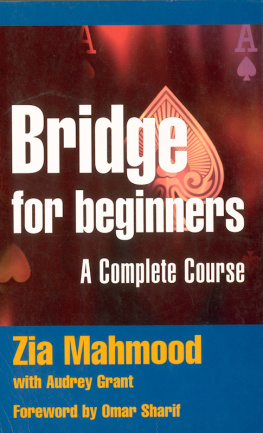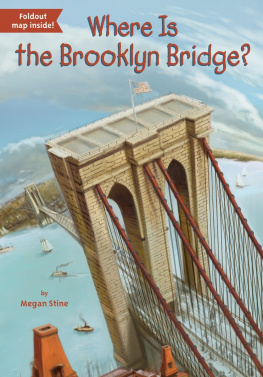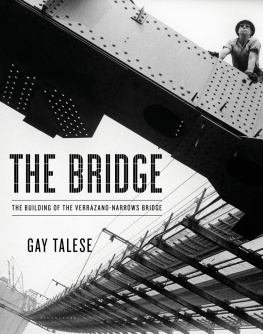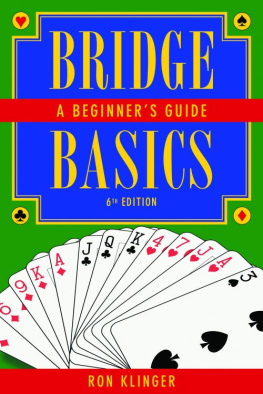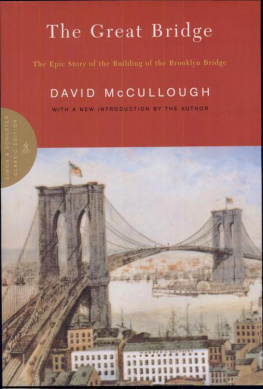We have no better social historian.
The New York Times
READ THE COMPLETE DAVID MCCULLOUGH COLLECTION

A narrative tour de force... expert research and detailed, graceful prose. Publishers Weekly

Combines a novelists sense of drama with a scholars meticulous attention to the historical record. The New York Times

Rich in revealing anecdotes and penetrating insights. The Washington Post

A full account of Roosevelts rise to manhood... full of irrepressible vitality. The Denver Post
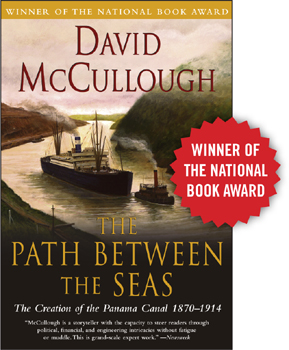
Full of giant-sized characters and rich in political skullduggery. The New York Times
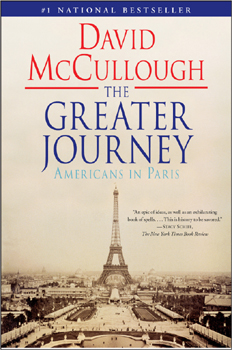
It will entice a whole new generation of Francophiles. San Francisco Chronicle
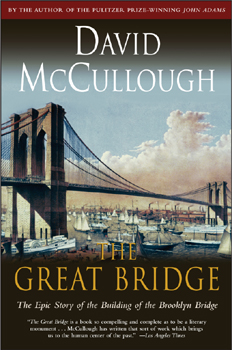
That sort of work which brings us to the human center of the past. Los Angeles Times
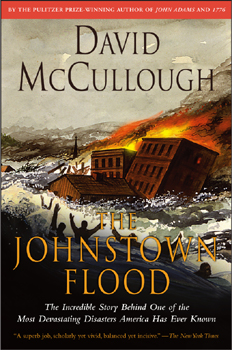
A first rate example of the documentary method. The New Yorker
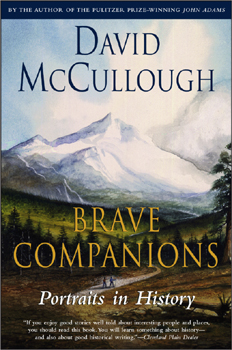
If you enjoy good stories well told about interesting people and places, you should read this book. The Plain Dealer (Cleveland)
DOWNLOAD YOUR COPIES TODAY!
Visit DavidMcCullough.com

Thank you for purchasing this Simon & Schuster eBook.
Join our mailing list and get updates on new releases, deals, bonus content and other great books from Simon & Schuster.
C LICK H ERE T O S IGN U P
or visit us online to sign up at
eBookNews.SimonandSchuster.com

Contents
Acknowledgments
During my research and writing I have been extremely fortunate in the assistance I have received from many people and I should like to express to them my abiding gratitude. For their kindnesses and help I wish to thank the librarians at both Rutgers University and Rensselaer Polytechnic Institute and in particular Miss Irene K. Lionikis of the Rutgers Library and Mrs. Orlyn LaBrake and Mrs. Adrienne Grenfell of the library at Rensselaer. Herbert R. Hands of the American Society of Civil Engineers; David Plowden; Dr. Milton Mazer; Dr. Roy Korson, Professor of Pathology at the University of Vermont; W.H. Pearson; Sidney W. Davidson; J. Robert Maguire; Charlotte La Rue of the Museum of the City of New York; Regina M. Kellerman; William S. Goodwin; Allan R. Talbot; John Talbot; and Jack Schiff, the engineer in charge of New Yorks East River bridges, each contributed to the research; and Dr. Paul Gugliotta of New York, who started me thinking about this book and later very kindly walked the bridge with me and answered many questions.
I am especially indebted to Robert M . Vogel, Curator, Division of Mechanical and Civil Engineering at the Smithsonian Institution; to John A. Kouwenhoven, authority on New York City history and on James B. Eads; to Nomer Gray, bridge engineer, who has made his own extensive technical studies of the bridge; and to Charlton Ogburn, author and friend. Each of them read the manuscript and offered numerous critical suggestions, but any errors in fact or judgment that may appear in the book are entirely my own.
I would like to acknowledge, too, the contribution of three members of the Roebling family: Mr. Joseph M. Roebling of Trenton and Mr. F. W. Roebling, also of Trenton, who gave of their time to talk with me about their forebears, and Mrs. James L. Elston of Fayetteville, Arkansas, who let me borrow an old family scrapbook.
I am grateful for the research facilities and assistance offered by the staffs of the following: the Trenton Free Public Library; the Carnegie Library, Pittsburgh; the Brooklyn Public Library; the Long Island Historical Society, Brooklyn, and particularly to Mr. John H. Lindenbusch, its executive director; the Newport Historical Society, Newport, Rhode Island; the Library of Congress; the New York Historical Society; the New York Public Library; the Engineering Societies Library, New York; the Middlebury College Library, Middlebury, Vermont; the Baker Library, Dartmouth College; the Putnam County Historical Society and the Julia Butterfield Memorial Library at Cold Spring, New York; and the Butler County Library, Butler, Pennsylvania.
I wish also to acknowledge my indebtedness to two valued friends who are no longer livingto Conrad Richter, for his encouragement and example, and to Clarence A. Barnes, my father-in-law, who was born on Willow Street on Brooklyn Heights, when the bridge was still unfinished, and who could talk better than anyone I knew about times gone by.
Lastly I would like to express my thanks to Paul R. Reynolds, who provides steady encouragement and sound advice; to Peter Schwed, Publisher of Simon & Schuster, who had faith in the idea from the start; to Jo Anne Lessard, who typed the manuscript; to my children, for their confidence and optimism; and to my wife, Rosalee, who helped more than anyone.
David McCullough
For my mother and father
Preface
for The Great Bridge anniversary edition
by David McCullough
It is now nearly a century and a half since John A. Roebling, the German-American genius of suspension bridges, stated unequivocally that his proposed span over New Yorks East River would be, if built according to his design, the greatest engineering work of the age, a great work of art, and would testify forever to the character of the community that built it.
The Brooklyn Bridge, a masterwork of granite and steel, stands today fulfilling its original purpose no less than ever, and all that Roebling promised.
By far the longest suspension bridge in the world when completed, it was also much the tallest structure on the skyline, the beginning of high-rise, heroic New York. And for all the spectacular additions to the skyline since, the bridge remains as proud and popular a symbol of New York as is the Eiffel Tower for Paris.
Engineers, architects, art historians revere it as a powerful work of art. No American structure ever built has so inspired so many photographers and painters, songwriters and poets. It has been a setting for movies, fashion ads, and television commercials beyond counting. We seem never to tire of the Brooklyn Bridge.
Next page
